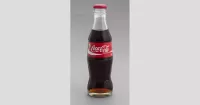The NASCAR Cup Series is the highest level of stock car racing sanctioned by NASCAR in the United States. It is the most prestigious and competitive series in stock car racing. The series features races held at various tracks across the country, with drivers competing in stock cars specifically designed for high-speed oval track racing. NASCAR's Cup Series champion is determined through a points system accumulated over the season, culminating in a playoff series to decide the ultimate winner.
1948: Sanctioning of Modified and Roadster division races
In 1948, NASCAR sanctioned Modified and Roadster division races.
1949: R. Byron wins
In 1949, R. Byron won.
1949: Red Byron Wins First NASCAR Cup Series Drivers' Championship
In 1949, Red Byron was awarded the first NASCAR Cup Series Drivers' Championship.
1950: Darlington Raceway Opened
Darlington Raceway, opened in 1950, was the first completely paved track on the circuit over one mile (1.6 km) long.
1950: Series Renamed Grand National Division
From 1950 to 1970, the series was known as the Grand National Division.
1950: B. Rexford wins
In 1950, B. Rexford won.
1951: H. Thomas wins
In 1951, H. Thomas won.
1951: Herb Thomas Wins Multiple Championships
In 1951, Herb Thomas became the first driver to win multiple NASCAR Cup Series Championships.
1952: T. Flock wins
In 1952, T. Flock won.
1953: H. Thomas wins
In 1953, H. Thomas won.
1953: Herb Thomas Wins NASCAR Cup Series Championship
In 1953, Herb Thomas won another NASCAR Cup Series Championship.
1954: L. Petty wins
In 1954, L. Petty won.
1954: First Road Course Event
The series' first road course event was held in 1954, at Linden Airport in New Jersey.
1955: T. Flock wins
In 1955, T. Flock won.
1956: Race at Road America held in Rain
In 1956 a race at Road America was held in the rain. Tim Flock won the race.
1956: B. Baker wins
In 1956, B. Baker won.
1957: B. Baker wins
In 1957, B. Baker won.
1957: Chevrolet Black Widow Outlawed
In 1957, NASCAR outlawed the fuel injected 150 model Chevrolet, known as "the black widow." Despite this, the 1957 Chevrolet still achieved the most race wins, totaling 59, surpassing any other car in the Cup Series.
1958: L. Petty wins
In 1958, L. Petty won.
1959: L. Petty wins
In 1959, L. Petty won.
1959: Daytona International Speedway Opened
In 1959, when Daytona International Speedway was opened, the schedule still had more races on dirt racetracks than on paved ones.
1960: R. White wins
In 1960, R. White won.
1961: N. Jarrett wins
In 1961, N. Jarrett won.
1962: J. Weatherly wins
In 1962, J. Weatherly won.
1963: J. Weatherly wins
In 1963, J. Weatherly won.
1963: Road Course Every Year
Since 1963, the series has raced on at least one road course every year.
1964: R. Petty wins
In 1964, R. Petty won.
1965: N. Jarrett wins
In 1965, N. Jarrett won.
1965: Modified Chassis Introduced
In 1965, NASCAR introduced modified chassis, with mid-size cars like the Ford Fairlane and Plymouth Belvedere becoming the standard.
1966: D. Pearson wins
In 1966, D. Pearson won.
1967: R. Petty wins
In 1967, R. Petty won.
1968: D. Pearson wins
In 1968, D. Pearson won.
1969: D. Pearson wins
In 1969, D. Pearson won.
September 30, 1970: Last Grand National Race on Dirt Track
On September 30, 1970, the last NASCAR Grand National race on a dirt track (until 2021) was held at the half mile State Fairgrounds Speedway in Raleigh, North Carolina. Richard Petty won the race.
1970: End of Dirt Racing Era
After the 1970 season, NASCAR ceased racing on dirt tracks for over 50 years.
1970: ABC Sports Aired Grand National Races
In 1970, ABC Sports aired partial or full live telecasts of Grand National races from various tracks. However, live coverage was later abandoned in favor of delayed broadcasts on Wide World of Sports.
1970: B. Isaac wins
In 1970, B. Isaac won.
1970: End of Grand National Division Era
The series was known as the Grand National Division from 1950 until 1970.
1971: Start of Winston Cup Series Sponsorship
Between 1971 and 2003, NASCAR's premier series was sponsored by R. J. Reynolds Tobacco Company cigarette brand Winston, dubbing it the Winston Cup Series. The series was originally called the Winston Cup Grand National Series.
1971: Grand National Renamed Winston Cup Series
In 1971 the Grand National was renamed the Winston Cup Series.
1971: Rules Change Limits Specialty Cars
In 1971, NASCAR rewrote the rules to limit the Ford and Chrysler specialty cars (Aero Warriors) to 305ci (5.0L), effectively forcing them out of competition. The cars affected by this rule include the Ford Talladega, Mercury Spoiler II, Dodge Charger 500, Dodge Charger Daytona and the Plymouth Superbird.
1971: R. Petty wins
In 1971, R. Petty won.
1971: Winston Cup Series Begins
In 1971, the series began leasing its naming rights to the R. J. Reynolds Tobacco Company, becoming the NASCAR Winston Cup Series (1971–2003).
1972: R. Petty wins
In 1972, R. Petty won.
1972: Beginning of NASCAR's "Modern Era"
The changes that resulted from RJR's involvement and the reduction in schedule from 48 to 31 races per year established 1972 as the beginning of NASCAR's "modern era".
1973: B. Parsons wins
In 1973, B. Parsons won.
August 1974: Bob Latford Designs New Points System
In August 1974, Bill France Jr. asked series publicist Bob Latford to design a points system with equal points being awarded for all races.
1974: R. Petty wins
In 1974, R. Petty won.
1974: Engine Displacement Increased
In 1974, the maximum engine displacement was increased from 430 cubic inches to 433 cubic inches in NASCAR.
1975: Small Block Engine Displacement Reduced
In 1975, NASCAR reduced the maximum small block engine displacement from 366 cubic inches (6.0 liters) to its present 358 cubic inches (5.9 liters).
1975: R. Petty wins
In 1975, R. Petty won.
1975: New Points System Implemented
The points system designed by Bob Latford in 1974 remained unchanged from 1975 until the Chase for the Championship was instituted in 2004.
1976: C. Yarborough wins
In 1976, C. Yarborough won.
1977: C. Yarborough wins
In 1977, C. Yarborough won.
1977: Older GM Models Retained
In 1977, NASCAR retained the older GM models, through 1980 due to the downsizing of American cars and the challenge it presented for NASCAR's minimum wheelbase rule.
1977: Engine Displacement Transition Complete
In 1977, the transition to the reduced engine displacement was completed in NASCAR, coinciding with the end of factory support from American manufacturers and the 1973 oil crisis.
1978: C. Yarborough wins
In 1978, C. Yarborough won.
1979: Older Models Retained
In 1979, NASCAR retained the older models (1977 for the GM makes, and 1979 for Ford and Dodge) through 1980 due to the downsizing of American cars and the challenge it presented for NASCAR's minimum wheelbase rule.
1979: R. Petty wins
In 1979, R. Petty won.
1979: Daytona 500 Televised Live on CBS
In 1979, the Daytona 500 became the first stock car race that was nationally televised live from flag to flag on CBS. The race featured a wreck between Cale Yarborough and Donnie Allison and a subsequent fight, increasing its broadcast marketability.
1980: D. Earnhardt wins
In 1980, D. Earnhardt won.
1980: Older Models Retained Through 1980
In 1980, NASCAR retained the older models (1977 for the GM makes, and 1979 for Ford and Dodge) through 1980 due to the downsizing of American cars and the challenge it presented for NASCAR's minimum wheelbase rule.
1981: D. Waltrip wins
In 1981, D. Waltrip won.
1981: Wheelbase Requirement Reduced
In 1981, NASCAR reduced the wheelbase requirement to 110 inches (2,800 mm), allowing newer model cars to meet the standard without affecting their appearance.
1981: Awards Banquet in New York City Begins
In 1981, an awards banquet began to be held in New York City on the first Friday evening in December.
1982: D. Waltrip wins
In 1982, D. Waltrip won.
1982: Daytona 500 Becomes First Non-Exhibition Race
Since 1982, the Daytona 500 has been the first non-exhibition race of the year.
1983: B. Allison wins
In 1983, B. Allison won.
1983: Ford Thunderbird and Chevrolet Monte Carlo Introduced
In 1983, the rounded, aerodynamic Ford Thunderbird gained prominence, and the Chevrolet Monte Carlo and Pontiac Grand Prix adopted bubble back windows to stay competitive in NASCAR.
1984: T. Labonte wins
In 1984, T. Labonte won.
1985: Chrysler Leaves NASCAR
At the end of the 1985 season, Chrysler Corporation left NASCAR entirely after dropping its poor performing Dodge Mirada and Chrysler Cordoba in 1983.
1985: D. Waltrip wins
In 1985, D. Waltrip won.
1985: Introduction of the Winston Million
In 1985, Winston introduced a new awards program called the Winston Million, offering one million dollars to any driver who won three of the four most prestigious races.
1985: Banquet Moved to Grand Ballroom
In 1985, the awards banquet was moved to the much larger Grand Ballroom in the Waldorf-Astoria.
1986: "Grand National" Dropped From Winston Cup Series Name
In 1986, "Grand National" was dropped from the Winston Cup Grand National Series name.
1986: D. Earnhardt wins
In 1986, D. Earnhardt won.
1987: Bill Elliott sets qualifying lap record at Talladega
In 1987, Bill Elliott set a record qualifying lap speed of 212.809 mph at Talladega Superspeedway. This record is unlikely to be broken due to subsequent rule changes to reduce speeds.
1987: D. Earnhardt wins
In 1987, D. Earnhardt won.
1987: Restrictor Plates Mandated at Talladega and Daytona
In 1987, after Bobby Allison's crash at Talladega Superspeedway injured several spectators, NASCAR mandated the use of a restrictor plate at Talladega Superspeedway and Daytona International Speedway to reduce speeds.
1988: B. Elliott wins
In 1988, B. Elliott won.
1988: Restrictor plates made mandatory at superspeedways
In 1988, restrictor plates were mandated at superspeedways to reduce race car speeds.
1989: Darrell Waltrip Nearly Wins Winston Million
Darrell Waltrip nearly won the Winston Million in 1989.
1989: GM Switches to V6 Engines
In 1989, GM switched its mid-sized models to V6 engines and front-wheel-drive, but the NASCAR racers only kept the body shape, with the old V8 rear-wheel-drive running gear, rendering obsolete the "stock" nature of the cars.
1989: R. Wallace wins
In 1989, R. Wallace won.
1990: D. Earnhardt wins
In 1990, D. Earnhardt won.
1991: D. Earnhardt wins
In 1991, D. Earnhardt won.
1992: Beginning of Generation 4 Car
1992 marked the beginning of the generation that stripped all semblance of "stock" from "stock car racing," the Generation 4 car. Stock body panels were removed from the sport, and steel bumpers were replaced by fiberglass to reduce weight.
1992: Davey Allison Nearly Wins Winston Million
Davey Allison nearly won the Winston Million in 1992.
1992: A. Kulwicki wins
In 1992, A. Kulwicki won.
1993: D. Earnhardt wins
In 1993, D. Earnhardt won.
1993: Rusty Wallace's Crashes
In 1993, Rusty Wallace had two crashes, which lead to the addition of roof flaps to all cars in 1994.
1994: D. Earnhardt wins
In 1994, D. Earnhardt won.
1994: First Brickyard 400
In 1994, NASCAR held the first Brickyard 400 at Indianapolis Motor Speedway.
1994: Roof Flaps Added to Cars
In 1994, roof flaps were added to all cars after Rusty Wallace's two infamous airborne crashes in 1993.
1995: J. Gordon wins
In 1995, J. Gordon won.
1995: Chevrolet Monte Carlo Returns
In 1995, the newly designed Chevrolet Monte Carlo returned to the sport, which started the trend of rounder body shapes.
1996: Dale Jarrett Nearly Wins Winston Million
Dale Jarrett nearly won the Winston Million in 1996.
1996: T. Labonte wins
In 1996, T. Labonte won.
1997: Winner's Prize Money for Daytona 500 Tripled
Between 1997 and 1998, the winner's prize money for the Daytona 500 tripled.
1997: Last Winston Million Award
From 1985 to 1997, any driver who won three of the four most prestigious races in the series was given one million dollars. Jeff Gordon won the Winston Million in 1997.
1997: J. Gordon wins
In 1997, J. Gordon won.
1997: Ford Thunderbird Retired
In 1997, the Ford Thunderbird was retired, and the four-door Ford Taurus body was used (although NASCAR racers actually have no opening doors).
1998: Winner's Prize Money for Daytona 500 Tripled
Between 1997 and 1998, the winner's prize money for the Daytona 500 tripled.
1998: J. Gordon wins
In 1998, J. Gordon won.
1998: Winston Million Replaced with Winston No Bull Five
In 1998, the Winston Million was replaced with a similar program, the Winston No Bull Five.
1998: Tobacco Industry Settlement
The 1998 Tobacco Industry Settlement sharply restricted avenues for tobacco advertising, including sports sponsorships.
1998: Asymmetrical Bodies on Cars
The new rules eliminated the asymmetrical bodies on cars, which had run rampant since the 1998 Taurus launch (and intensified by the final years of the Generation 4 car).
1998: Hood, roof, and decklid Modifications Allowed
Until 1998, the hood, roof, and decklid were still required to be identical to their stock counterparts. This was eliminated when NASCAR allowed significant modifications of the Ford Taurus decklid so the car would fit the required templates.
1999: D. Jarrett wins
In 1999, D. Jarrett won.
2000: B. Labonte wins
In 2000, B. Labonte won.
2001: Awards Ceremony Replaces Banquet
For 2001, the banquet portion was dropped in favor of a simpler awards ceremony, which was also moved to the Hammerstein Ballroom at the Manhattan Center the following year.
2001: J. Gordon wins
In 2001, J. Gordon won.
2001: Pixar Visits NASCAR Tracks for "Cars" Research
In 2001, Pixar visited NASCAR tracks as research for the 2006 animated film "Cars", which included the voices of Petty and Dale Earnhardt Jr.
2002: R.J. Reynolds Announces Sponsorship Termination
During the 2002 season, R.J. Reynolds notified NASCAR leadership that they would terminate their title sponsorship prematurely at the conclusion of the 2003 season.
2002: T. Stewart wins
In 2002, T. Stewart won.
2003: End of Winston Cup Series
Between 1971 and 2003, NASCAR's premier series was sponsored by R. J. Reynolds Tobacco Company.
2003: M. Kenseth wins
In 2003, M. Kenseth won.
2003: Approved Body Configuration Design
In 2003, NASCAR introduced the "Approved Body Configuration" (also known as "common template") design to emphasize parity, similar to short track racing, due to issues with offset cars since the 1998 Taurus launch.
2003: Banquet Format Reinstated
In 2003, the festivities returned to the Waldorf's Grand Ballroom, and the banquet format was reinstated.
2004: New System for Determining Series Champion
Along with the change in title sponsorship for the series, the 2004 season also introduced a new system for determining the series champion, influenced by the system used in the USAR Hooters Pro Cup Series.
2004: Inaugural Chase for the Nextel Cup
From the inaugural Chase in 2004 to the 2006 Chase, the drivers were seeded based on points position at the end of the regular season.
2004: Nextel Cup Series Begins
In 2004 the series became known as the Nextel Cup Series after NASCAR negotiated a contract with Nextel to replace Winston.
2004: Ku. Busch wins
In 2004, Ku. Busch won.
2004: Chase for the Championship Instituted
The Chase for the Championship was instituted in 2004, replacing the points system that had been in place since 1975.
2005: Sprint Acquires Nextel
In 2005, Sprint acquired Nextel.
2005: T. Stewart wins
In 2005, T. Stewart won.
2006: Chase for the Nextel Cup Seeding Based on Points
From the inaugural Chase in 2004 to the 2006 Chase, the drivers were seeded based on points position at the end of the regular season.
2006: J. Johnson wins
In 2006, J. Johnson won.
2006: Jimmie Johnson Wins Consecutive Championships
In 2006, Jimmie Johnson began his record-setting streak of consecutive NASCAR Cup Series Championships.
2006: "Cars" Film Released
In 2006, the animated film "Cars", which included the voices of Petty and Dale Earnhardt Jr., was released, after Pixar visited NASCAR tracks for research in 2001.
2006: Merger between Sprint and Nextel
The 2006 merger between Sprint and Nextel resulted in the Cup Series being renamed the Sprint Cup, beginning with the 2008 season.
March 2007: Car of Tomorrow Debuts
In March 2007, NASCAR introduced the "Car of Tomorrow" (CoT) at Bristol Motor Speedway, initially used at 16 selected events.
October 2007: Speed Record Attempt at Bonneville Salt Flats
In October 2007, Russ Wicks drove a modified Dodge Charger stock car, built to NASCAR's specifications, 244.9 mph during a speed record attempt at the Bonneville Salt Flats.
2007: J. Johnson wins
In 2007, J. Johnson won.
2007: Chase Field Increased to 12 Teams
In 2007, the number of teams eligible for the Chase increased to 12.
2008: J. Johnson wins
In 2008, J. Johnson won.
2008: Sprint Cup Series Begins
In 2008, the series was renamed the NASCAR Sprint Cup Series (2008–2016).
2009: End of Popularity Boom
By 2009, the popularity boom of the 1990s had ended, and television ratings over the previous ten years had become more or less stagnant.
2009: Carl Edwards' High-Speed Spin
In 2009, Carl Edwards experienced a high-speed spin during the Aaron's 499 at Talladega Superspeedway, leading to criticisms of the rear wing.
2009: J. Johnson wins
In 2009, J. Johnson won.
2010: Chase Points Totals Reset
From 2007 to 2010, the points totals of each driver who made the Chase were reset to 5,000 points, plus ten additional points for each race victory during the first 26 races.
2010: J. Johnson wins
In 2010, J. Johnson won.
2010: Jimmie Johnson Wins Consecutive Championships
In 2010, Jimmie Johnson concluded his record-setting streak of five consecutive NASCAR Cup Series Championships.
2010: Rear Wing Replaced with Spoiler
In 2010, NASCAR decided to replace the rear wing with the original spoiler, starting with the 2010 Goody's Fast Pain Relief 500 at Martinsville Speedway.
November 20, 2011: Tony Stewart Wins 2011 NASCAR Cup Series Championship
On November 20, 2011, Tony Stewart and Carl Edwards ended the season in a points tie, a first-ever occurrence. Tony Stewart won the 2011 NASCAR Cup Series Championship due to his five wins over Carl Edwards' one win.
2011: Nose of Car Altered
In 2011, NASCAR altered the nose of the car once more, with the splitter being reduced in size and the braces being replaced by a solid front valence.
2011: T. Stewart wins
In 2011, T. Stewart won.
2012: B. Keselowski wins
In 2012, B. Keselowski won.
2012: Fuel Injection Technology Introduced
In 2012, NASCAR introduced fuel injection technology, marking a major engine change.
July 2013: SoftBank Acquires Sprint
In July 2013, Japanese telecommunications corporation SoftBank acquired Sprint.
2013: J. Johnson wins
In 2013, J. Johnson won.
2013: Generation 6 Race Car Introduced
In 2013, manufacturers were given increased leeway for branding their NASCAR Cup Series cars, creating the Generation 6 race car, in an attempt to have the cars more closely resemble their street counterparts.
2014: K. Harvick wins
In 2014, K. Harvick won.
2014: Formation of the Race Team Alliance
In 2016, NASCAR announced the creation of a charter system (in association with the Race Team Alliance, formed in 2014).
2015: Ky. Busch wins
In 2015, Ky. Busch won.
December 1, 2016: NASCAR Announces Sponsorship Agreement with Monster Energy
On December 1, 2016, NASCAR announced that it had reached an agreement with Monster Energy to become the new sponsor of NASCAR's premier series after the title sponsorship with Sprint ended.
December 2016: Monster Energy Named New Title Sponsor
In December 2016, it was announced that Monster Energy would become the new title sponsor of the series, which was subsequently renamed the Monster Energy NASCAR Cup Series (2017–2019).
December 19, 2016: NASCAR Announces New Series Name and Logos
On December 19, 2016, NASCAR announced the new name for the series, Monster Energy NASCAR Cup Series, as well as the new series logo and new NASCAR logo.
2016: J. Johnson wins
In 2016, J. Johnson won.
2016: NASCAR Announces Charter System
In 2016, NASCAR announced the creation of a charter system, which would guarantee 36 teams' entry to all 36 races. NASCAR also reduced the size of the Cup field to 40 cars.
2016: Digital Dashboards Introduced
In 2016, all NASCAR Cup Series cars began utilizing a digital dash sold by McLaren, providing drivers with customizable preset screens and various data elements.
2017: M. Truex Jr. wins
In 2017, M. Truex Jr. won.
2017: Monster Energy NASCAR Cup Series Begins
In 2017, the series was renamed the Monster Energy NASCAR Cup Series (2017–2019) after Monster Energy became the new title sponsor.
April 11, 2018: Monster Energy Extends NASCAR Sponsorship
On April 11, 2018, Monster Energy announced an extension of their sponsorship of the series through the end of the 2019 season.
2018: Chevrolet Switched to Camaro
In 2018, Chevrolet switched to the Chevrolet Camaro in the Cup Series, leading to a return of pony cars and coupe-based models due to the sales decline of sedans in the American car market.
2018: J. Logano wins
In 2018, J. Logano won.
2019: Ky. Busch wins
In 2019, Ky. Busch won.
2019: Monster Energy Deal Ends
In 2019, NASCAR rejected Monster's offer to extend the naming rights deal beyond the end of the season.
2019: Restrictor plates replaced by tapered spacers
In 2019, restrictor plates were replaced by tapered spacers at superspeedways, continuing the effort to limit horsepower and reduce speeds to below 205 mph.
2019: Daytona 500 TV Audience
In 2019, the Daytona 500, the most prestigious race, had a television audience of about 9.17 million U.S. viewers.
2020: Schedule Includes Tracks Around the United States
As of 2020, the NASCAR Cup Series schedule includes tracks from around the United States.
2020: NASCAR's Top Level Becomes NASCAR Cup Series
Beginning with the 2020 season NASCAR's top level of competition became known as the NASCAR Cup Series. As part of a tiered sponsorship model, Busch Beer, Coca-Cola, GEICO, and Xfinity became the Premier Partners of the series, with Coca-Cola also assuming naming rights of the regular season trophy.
2020: C. Elliott wins
In 2020, C. Elliott won.
2020: NASCAR Cup Series Adopts New Sponsorship Model
In 2020, NASCAR moved to a new tiered sponsorship model, and the series was simply known as the NASCAR Cup Series, with the sponsors being called Premier Partners.
2020: First In-Race Use of Rain Tires
The first in-race use of rain tires in the Cup Series were at the 2020 Bank of America Roval 400.
2021: Windshield Wipers Required
In 2021, Cup cars were required to have at least one working windshield wiper installed for road courses and Daytona as part of the road racing rules package.
2021: K. Larson wins
In 2021, K. Larson won.
2021: Dirt Racing Returns
In 2021, dirt racing returned to the NASCAR schedule with a March event at Bristol Motor Speedway.
2021: Second In-Race Use of Rain Tires
The second in-race use of rain tires in the Cup Series were at the 2021 Texas Grand Prix.
2022: J. Logano wins
In 2022, J. Logano won.
2022: Next Gen Car Introduced
In 2022, NASCAR introduced the Next Gen car, featuring improved aero and downforce packages and new technologies, aimed at lowering costs and attracting new manufacturers.
2023: R. Blaney wins
In 2023, R. Blaney won.
2023: Next Gen Camaro at Le Mans
In 2023, a heavily modified Next Gen Camaro fielded by Hendrick Motorsports entered the 2023 24 Hours of Le Mans, where it finished 39th out of the 62 cars entered in the event.
2024: J. Logano wins
In 2024, J. Logano won.
2024: 2024 Season Tracks
The 2024 NASCAR season included 31 races at oval tracks and 5 at road courses.
Mentioned in this timeline

Coca-Cola is a globally recognized cola soft drink produced by...

Bank of America is a multinational investment bank and financial...
CBS Broadcasting Inc CBS is a prominent American commercial broadcast...

Xfinity a brand of Comcast Corporation launched in provides consumer...
The National Broadcasting Company NBC is a major American commercial...
North Carolina is a Southeastern U S state the th-largest...
Trending

6 months ago Victor Wembanyama sports shaved head at Shaolin Temple; Draymond Green reacts.

1 month ago Warriors' Commitment Questioned After Loss; Green, Butler Criticize Teammates; Curry's Reaction?
8 days ago Cameron Crowe's 'The Uncool': A Cool Backstage Pass to Music History & Cringe

De'Anthony Melton known as Mr Do Something is a professional basketball player in the NBA currently playing for the Brooklyn...

14 days ago Childcare's economic boost in Prescott Valley, Yavapai crisis, and Hochul's universal options.

9 months ago Warriors defeat Bucks as Curry rests; Butler III shines in shocking victory.
Popular

Candace Owens is an American conservative political commentator and author...

Ilhan Omar is an American politician currently serving as the...

XXXTentacion born Jahseh Dwayne Ricardo Onfroy was a controversial yet...

Tom Cotton is an American politician and Army veteran currently...
Matt and Ross Duffer known as the Duffer Brothers are...
The Kennedy Center Honors are annual awards recognizing individuals and...